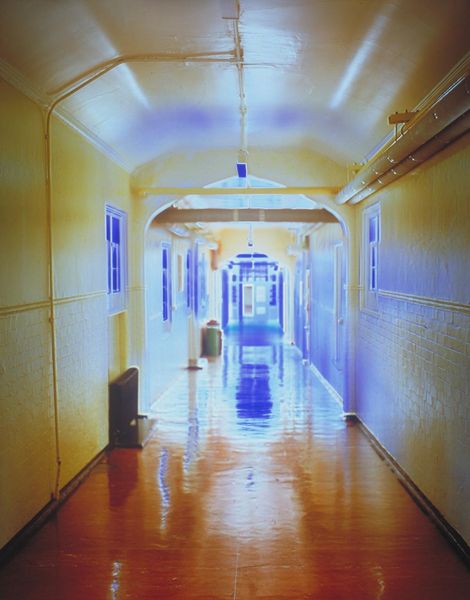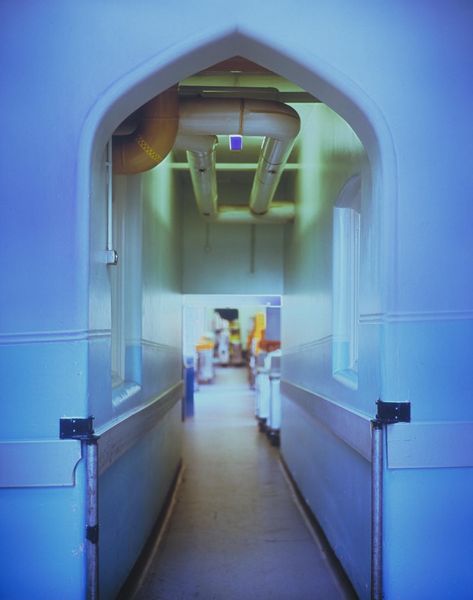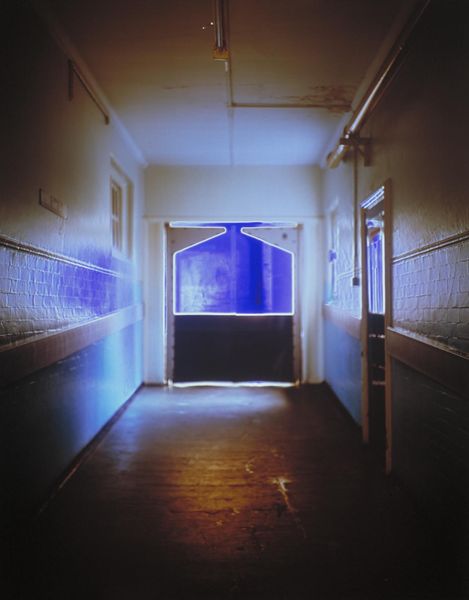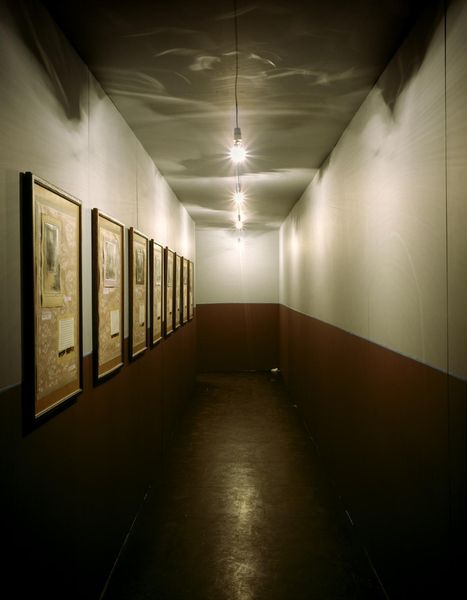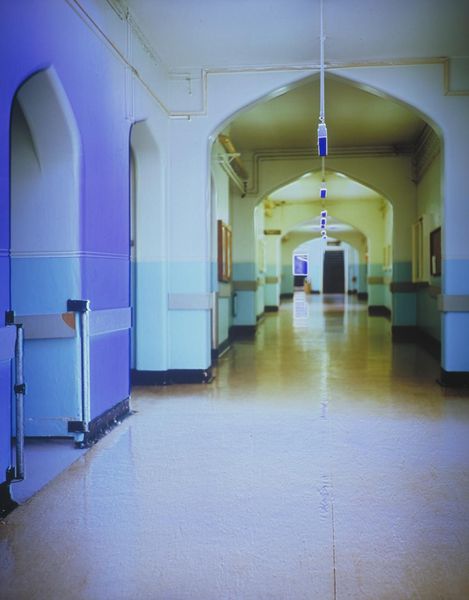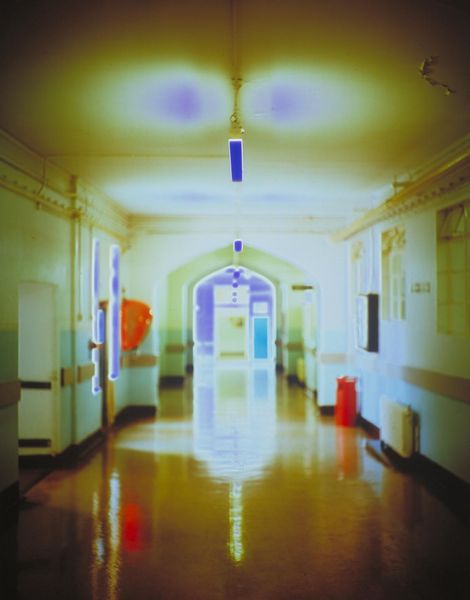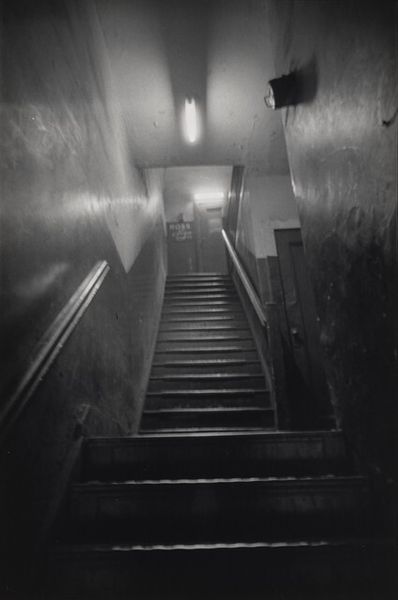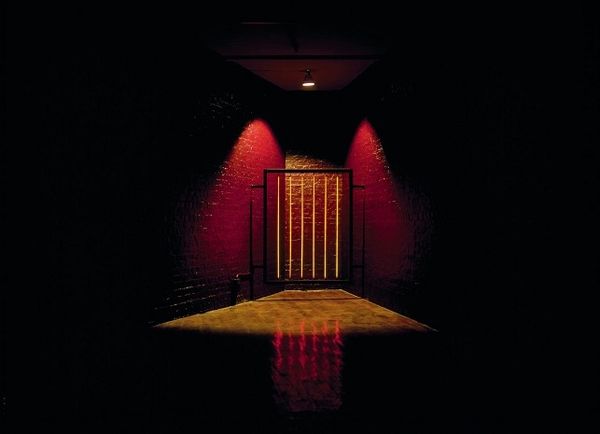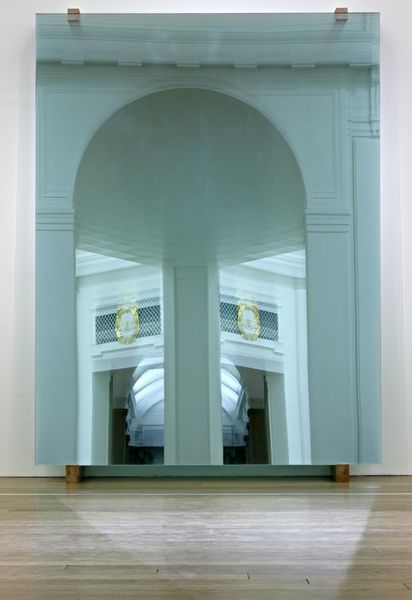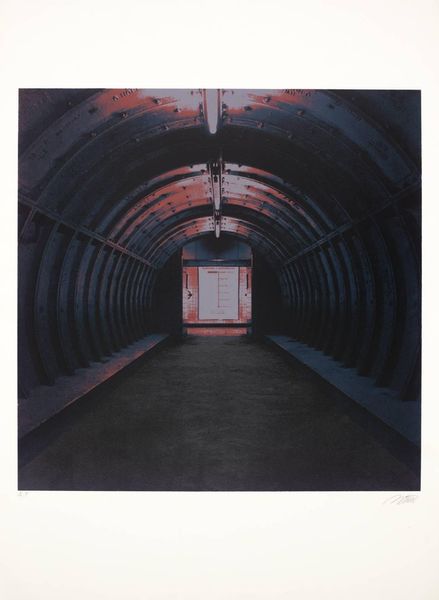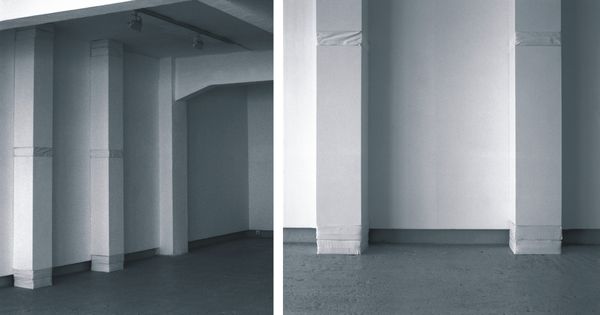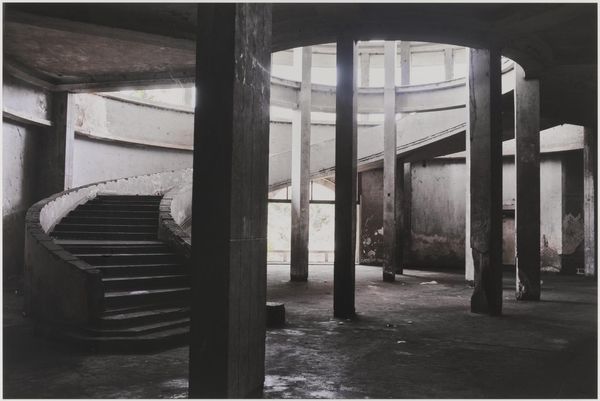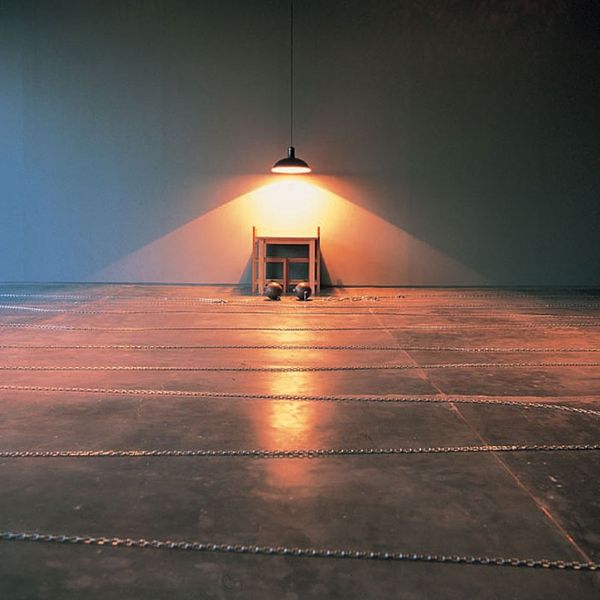
Dimensions: unconfirmed: 890 x 725 x 140 mm
Copyright: © Catherine Yass | CC-BY-NC-ND 4.0 DEED, Photo: Tate
Editor: This photograph is Catherine Yass's "Corridors," and its date is unconfirmed. The dimensions are approximately 890 x 725 x 140 mm. The interplay of light and shadow immediately grabs your attention. What formal elements stand out to you? Curator: The composition relies heavily on linear perspective, drawing the eye into the depths of the corridor. Note how the artist manipulates colour; the yellow tones contrast sharply with the cooler blue highlights, creating a visual tension. Editor: That makes sense. It’s a kind of stark contrast, isn’t it? Curator: Indeed. The reflective surfaces also play a crucial role, fragmenting the space and adding to the sense of unease. Did you observe the geometric forms created by the architectural structure? Editor: I did. It’s all so calculated, with a clear intention. Curator: Precisely. The formal qualities guide our interpretation, regardless of the corridor's specific location or historical context. The power lies in its visual language. Editor: Thanks, seeing how the formal elements create meaning is insightful. Curator: A pleasure to illuminate the inherent visual dynamics.
Comments
Join the conversation
Join millions of artists and users on Artera today and experience the ultimate creative platform.
tate 8 months ago
⋮
Presented by the Patrons of New Art (Special Purchase Fund) through the Tate Gallery Foundation 1996T07072 Corridors is a series of eight photographic transparencies displayed in light boxes. Featuring mainly luminous blues, greens and yellows as a result of the artist's manipulation of photographic film, they depict interior spaces in a hospital. The photographs are in sharp focus only in the foreground of the image, at the level of the corridor walls, and have been taken with a shallow depth of field. This results in dissolution into more abstracted forms in the areas further away from the camera. In most images this is in the centre, which dissolves into an intense blue glow. Blue light, similar in shade to that of 'Chartres blue', a long-lasting blue stained glass developed in the twelfth century in France for church windows, has become a signature element to Yass's work. Her technique for making images involves taking two photographs of her subject and superimposing them. One is a 'positive' image, the normal form of a photographic image, and the other is a 'negative' image, where light and dark are inverted as on the negative of a photographic print. The photographs are taken within a few seconds of each other. Yass has explained: 'The negative image makes bright areas blue, so bright or transparent areas get blocked by the blue. The final picture is produced by overlaying the positive and blue negative images and printing from that. I think of the space between positive and negative images as a gap.' (Quoted in Adams, p.81.) She has described this gap as 'an empty space left for the viewer to fall into … [resulting in] no limit to prevent the viewer from being pulled right in and being pushed out again.' (Quoted in Adams, p.84.) Yass's first publicly exhibited works, in the early 1990s, were portraits exploring the relationship between the personalities projected and the environments against which they were set. In 1994 she was one of three British artists commissioned by the Public Art Development Trust (a London based charity aiming to promote art and education about art in public spaces) to make a series of images for Springfield Hospital in south west London, a psychiatric institution built in the nineteenth century. She began by looking at photographic research into mental health undertaken at the hospital in the mid-nineteenth century by a local doctor, a Dr Diamond. At that time medical practitioners in the field of mental health were using photography as a tool to classify mental illness according to its physical manifestations. Diamond's portraits of his patients, like those of the famous French neuropathologist and doctor of hysteria, Dr Jean Martin Charcot (1825-93), labelled them under headings of their perceived disability. To subvert this, Yass made six portraits of anonymous hospital inmates and staff without visible indication of their status (whether they were working in the hospital or suffering from 'mental illness'). The photographs used in Corridors were intended as backgrounds to these portraits. Yass became interested in the empty spaces as images in and of themselves, perceiving them as even more disorientating to the viewer without their intended subjects. She uses light boxes to enhance this effect. She has stated: 'The work is not only about the image but also about the light boxes in a physical space. This produces another doubling or turning as the viewer switches between the space of the image and the space they're in. There is a disorientation as they are caught in the gap between them.' (Quoted in Adams, p.87.) The series of eight Corridors was produced in an edition of two, of which this is the first.A further set of four images exists in an edition of four, each of which is unique in its combination. The images each have a subtitle. For this image it is Jubilee. Other subtitles are Chaplaincy (T07065), Kitchen (Tate T07066), Daffodil 1 (T07067), Daffodil 2 (T07068), Ash (T07069), Modern Team Base (T07070) and Personnel (T07071). The images do not have a particular order and may be displayed separately or as a group. Further reading:British Art Show 4, exhibition catalogue, South Bank Centre, London 1995, p.16, reproduced (colour) pp.86-7Parveen Adams, Greg Hilty, Catherine Yass: Works 1994-2000, London 2000, pp.8 and 84, reproduced (colour) pp.19-23, pl.1-8Hospital Projects: Zarina Bhimji, Tania Kovats, Catherine Yass, Public Art Development Trust, London 1995, pp.17-19, reproduced (colour) pp.20-1 Elizabeth ManchesterMarch 2002
